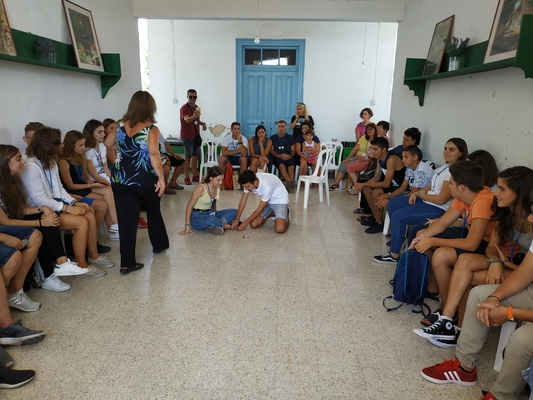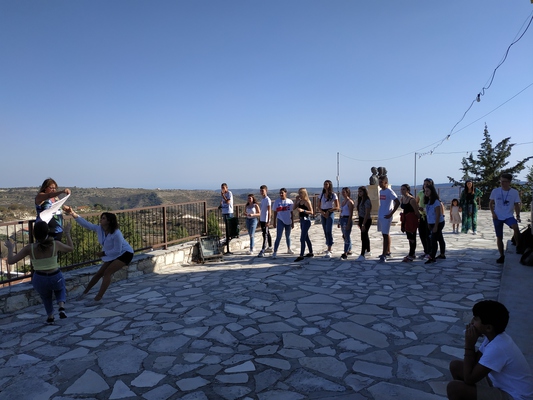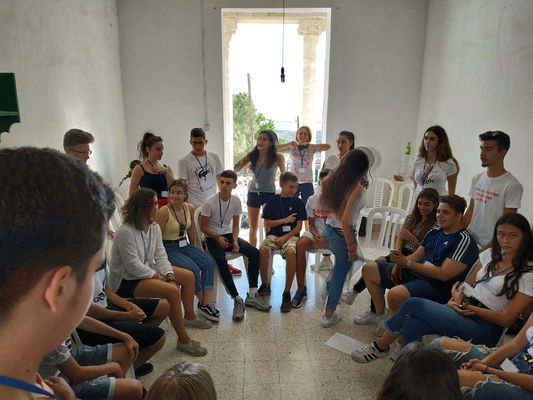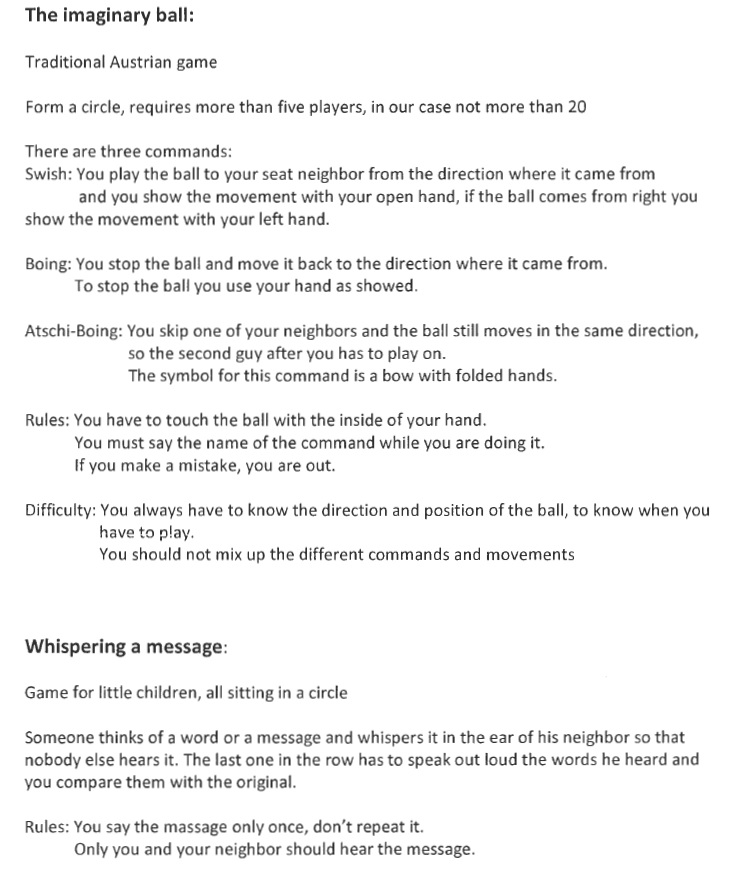


Traditional game form Austria

Traditional game form Greece
“Πεντόβολο - Pentovolo”
The renowned game, even known today by the names of“πεντόβολα”[pentovola](fivethrows),“πετράβολα”[petravola] (stonethrows),“πεντεκούκια”[pentekukia] (fivebeans), “πετράδια” [petradia](stones) and others, was known to the Greeks from very ancient times.
In“πεντόβολο” players used five small, smooth stones, five knuckle bones or five small and flat pieces of shell.
At the beginning of the game, the player, sitting down, has in front of him, on the ground, five stones. He throws up one of them and before it falls he must catch the second one. Then he throws both upwards and again before falling he must catch the third. He has to do this with all the stones. If no stone falls from is hand he is the winner.
Traditional game form Cyprus
HANDKERCHIEF
First you choose someone that will hold the handkerchief.
Then you make two equal teams.
The two teams stand in a straight line opposite from each other.
The person with the handkerchief stands in the middle.
The leader of each team numbers his players secretly.
Then the person who holds the handkerchief calls out a number and the 2 players from each team with the specific number run to take the handkerchief.
If the player who takes the handkerchief returns back to his team without being touched by the other player, his team earns a point. If not, the other team gets the point.
The winner is the team with the most points.
Traditional Playground Game from Poland
“One two three four five the witch is turning around” or Baba Jaga
Participants: different-age group of students
Aims:
- to break the ice
- to play outdoor
- to practice concentration
- to practice coordination
Rules:
- One person is selected as Baba Jaga the witch.
- Baba Jaga is facing the wall with her back towards other players.
- The players are standing in a row, side by side, along the line about 15 meters away from Baba Jaga.
- The witch, still with her back turned back, is saying the formula: “One two three four five - the witch is turning around” and immediately turns back.
- While the witch is saying her formula the participants run towards her. As soon as she finishes her formula, they have to freeze.
- Baba Jaga is now walking among the players who are trying to remain still. The wich is trying to find out the ones who are moving.
- The players poined by the witch have to go back to the starting point.
- The rest of the playesr are still standing still until Baba Jaga decides to turn back to the wall again and starts saying her formula.
- We play this way until someone gets to Baba Jaga. The first person who touches Baba Jaga becomes new Baba Jaga.
Traditional game form Romania
THE COUNTRIES
Our game is called "THE COUNTRIES".
We draw 2 circles, one in the middle of the other. The space between them is divided into 6 parts, each part representing a country.
We need: 1 representative from Cyprus, one from Poland, one from Austria, one from Spain, one from Romania…
The child in the middle of the circle throws the ball up, saying: "Come, come to war, to fight with us against the Turks……."
The child from the mentioned country has to catch the ball. The other children run away as far as possible. When the mentioned country catches the ball, the child puts the ball in the circle and shouts "Stop!" Everybody stops!
The child in the circle takes 3 steps outside the circle and throws the ball towards the closest "victim". If the victim is hit, he/she leaves the game and loses his/her country. If the victim is not hit, the child in the circle leaves the game and loses his country in favour of the victim.
The winner is the child that wins the most countries.
THE SNAIL
Our game is called "THE SNAIL".
We draw a spiral, so that to obtain a route leading to the centre.
We divide the route into parts (12-40), and we write STOP in the middle.
Each child will have to hop all through the route and back without crossing the lines.
If the child succeeds, he/she will write the first letter of his/her name in one of the spaces.
The next player has to jump over the spaces that have a letter inside.
The game ends when there are too many marked spaces and nobody can jump over them.
The winner is the child who has the letter of his name in most of the spaces.
Traditional game form Spain
THE GAME OF CHAIRS
Number of players: Ten and more
Game Development: Its traditional and best-known version is to put a roll of chairs around which players spin around while the music is playing. When the music stops, they have to sit down, one person in each chair. But there is one less chair relative to the number of people and one who cannot sit down is eliminated. In each round a chair is removed. The winner is the one who sits in the last chair when two people are left playing.
Objective of the game: Get to sit on the last chair.
Material: One chair less than the total number of players and a stereo.
What can this game bring? This is a very dynamic game where the skill is to be smarter than the companions and to try not to run out of chair, in this case the mental skill is important, but also the physical skill since one has to run constantly.
It can be said that one of the most important factors in this game is luck, because when the music stops you can find yourself in front of a chair or not. The game is really fun and also animated with music.